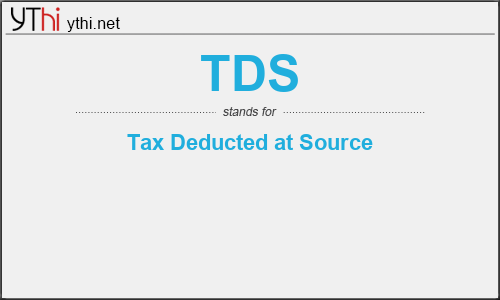What does TDS mean? What is the full form of TDS?
The full form of TDS is Tax Deducted at Source.
TDS stands for ‘Tax Deducted at Source’. It was introduced to collect tax at the source from where an individual’s income is generated. The government uses TDS as a tool to collect tax in order to minimise tax evasion by taxing the income (partially or wholly) at the time it is generated rather than at a later date.
TDS is applicable on various incomes such as salaries, interest received, commission received, dividends etc
TDS stands for tax deducted at source. As per the Income Tax Act, any company or person making a payment is required to deduct tax at source if the payment exceeds certain threshold limits. TDS has to be deducted at the rates prescribed by the tax department.
The company or person that makes the payment after deducting TDS is called a deductor and the company or person receiving the payment is called the deductee. It is the deductor’s responsibility to deduct TDS before making the payment and deposit the same with the government. TDS is deducted irrespective of the mode of payment–cash, cheque or credit–and is linked to the PAN of the deductor and deducted.
TDS is deducted on the following types of payments:
- Salaries
- Interest payments by banks
- Commission payments
- Rent payments
- Consultation fees
- Professional fees
However, individuals are not required to deduct TDS when they make rent payments or pay fees to professionals like lawyers and doctors.
TDS is one kind of advance tax. It is tax that is to be deposited with the government periodically and the onus of the doing the same on time lies with the deductor. For the deductee, the deducted TDS can be claimed in the form of a tax refund after they file their ITR.
TDS
means
Tax Deducted at Source![]()
Translate Tax Deducted at Source to other language.


Leave a Reply
You must be logged in to post a comment.